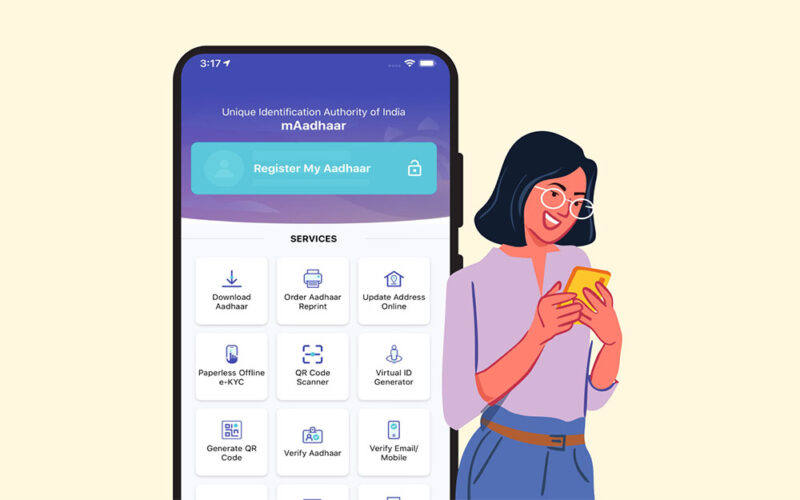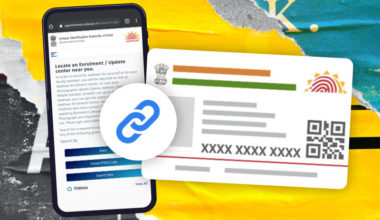The digital age has revolutionised traditional processes, making a plethora of services more accessible and convenient. A significant development in this domain is Aadhaar eSign online free signature service powered by UIDAI (Unique Identification Authority of India) which also regulates the registration for Aadhaar cards. Aadhaar eSign is a part of India’s robust biometric identification system.
What is Aadhaar eSign?
Aadhaar eSign is a framework that enables Indian residents to sign documents digitally using their Aadhaar identification data. It is a cloud-based electronic signature service, aiming to speed up the signing of official documents, making the process more efficient, streamlined and hassle-free.
To use the Aadhaar eSign, you must have an Aadhaar card and a registered mobile number linked to your Aadhaar card. The service combines two critical components: Aadhaar’s authentication and an electronic signature service provider (ESP). An ESP is a trusted third-party agency approved by the Controller of Certifying Authorities (CCA) under the Information Technology Act of India.
Aadhaar eSign service uses a similar infrastructure as Aadhaar eKYC. The significant difference is that eKYC only provides authentication, while Aadhaar eSign provides authentication plus the electronic signature of the Aadhaar holder.
How Does Aadhaar Based eSign Work?
Aadhaar-based eSign mechanism comprises of the following steps that leverage Aadhaar data for digital signature.
- Document Upload: The first step involves the user uploading the document to be signed on the platform that supports Aadhaar eSign.
- Aadhaar Number Entry: The user must enter their Aadhaar details, which the system uses to fetch the demographic data from the UIDAI database. This data is used to verify the identity of the user.
- OTP Authentication: Once the Aadhaar number is entered, the user will receive a One-Time Password (OTP) on their registered mobile number linked with the Aadhaar. The OTP ensures the user’s identity before proceeding with the signing process.
- Electronic Signature Generation: Upon successful OTP verification, the Electronic Signature Service Provider (ESP) creates a digital signature on behalf of the user. It’s crucial to understand that the Aadhaar holder does not generate the signature but is caused by the ESP.
- Document Signing: The digital signature created is used to sign the document electronically. The ESP attaches the digital signature to the document, thus making it a legally valid signed document.
- Download/share: The signed document is ready for download or can be shared directly from the platform.
Sidenote: The process of Aadhaar eSign can differ slightly based on the ESP or the online platform you use. Therefore, it is essential to refer to the specific guidelines provided by the respective ESP or platform.
Security Aspects of Aadhaar eSign
A noteworthy aspect of the Aadhaar eSign service lies in its security. The digital signature generated by the ESP is encrypted, providing a robust level of protection. The document signing process also incorporates a timestamp, ensuring traceability and non-repudiation. This makes the process of using Aadhaar eSign secure and trustworthy for users.
Prerequisites for Using Aadhaar eSign
To use Aadhaar eSign, an individual must have-
- An Aadhaar card
- A registered mobile number linked with the Aadhaar
- Access to an online platform that supports Aadhaar eSign.
Also Read: What are the Valid Documents Required For Aadhar Card?
Applications of Aadhaar eSign in Business
Aadhaar eSign is emerging as an essential business tool, redefining how businesses handle document-based processes.
- Contract signing: One of the areas where Aadhaar eSign proves invaluable is contract signing. In traditional business scenarios, contract signing can be lengthy and cumbersome, involving multiple steps and delays due to physical paperwork. With Aadhaar eSign, businesses can expedite this process by facilitating instant digital signatures on contracts. This leads to substantial time savings, faster contract execution, and increased productivity.
- Financial transactions: In financial transactions, Aadhaar eSign plays a significant role. For instance, banking institutions can use this service for loan agreement signings, credit approvals, and KYC processes. By adopting Aadhaar eSign, banks and financial institutions can enhance operational efficiency and offer better customer service.
- Administrative paperwork: Businesses often grapple with extensive administrative paperwork that consumes time and resources. Aadhaar eSign can streamline processes, minimize paperwork, and facilitate quicker approvals. From employee onboarding to vendor agreements, a myriad of administrative tasks can be made more efficient with Aadhaar eSign.
Aadhaar eSign and Legal Compliance
The importance of Aadhaar eSign extends beyond digitization and efficiency. It plays a crucial role in ensuring that businesses remain legally compliant. The Information Technology Act 2000 gives legal recognition to electronic signatures, provided they adhere to the specifications prescribed by the Act. Aadhaar eSign falls under these specifications, ensuring that the electronic signatures generated are legally valid.
In essence, this means that any document signed using Aadhaar eSign holds the same legal standing as a physically signed document. This legal validity is pivotal for businesses, particularly in legal agreements, financial transactions, or documents requiring legal recognition.
Also Read: How to Check Aadhaar Complaint Status?
How Aadhaar eSign Facilitates a Paperless Economy
Aadhaar eSign goes beyond simply digitising signatures. It stands as a transformative tool contributing to creating a paperless economy. Traditionally, business processes necessitate a high dependency on physical documents. This not only contributes to administrative inefficiency but also substantially reduces the nation’s carbon footprint.
Aadhaar eSign helps businesses reduce this dependency. By facilitating electronic signatures, it minimises the need for printing, scanning, and physically storing documents. This translates into considerable savings in terms of resources and costs.
Accessibility and Cost-Effectiveness of Aadhaar eSign
One of the key advantages of Aadhaar eSign is its accessibility. Aadhaar eSign is available to all Aadhaar cardholders, regardless of their location.
In terms of cost-effectiveness, Aadhaar eSign scores high. The government provides the Aadhaar eSign online free, making it a cost-effective solution for businesses. Though the ESP may charge a nominal fee, the cost is significantly lower than traditional document authentication methods.
Also Read: What is a Masked Aadhaar Card?
Conclusion
In a country as vast as India, where geographical barriers often pose challenges to accessibility, Aadhaar eSign serves as a tool for inclusivity. Regardless of location, individuals with just an Aadhaar card and a registered mobile number can avail of this service, enabling equal access to critical services.
Aadhaar eSign exemplifies India’s commitment to technological advancement and innovation.










